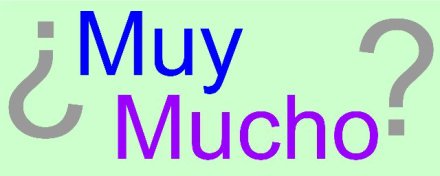Have you ever wondered: what is the difference between “muy” and “mucho”?
Muy is an adverb that we use together with an adjective or another adverb, and it does not change for gender or number:
- Lucía es una estudiante muy inteligente. Lucía is a very intelligent sudent. (inteligente = adjetivo)
- Ella camina muy rápido. She walks very quickly. (rápido = adverbio)
On the other hand, mucho is an adjective, so it must agree in number and gender to the noun it modifies.
- Los estudiantes tienen mucha tarea. The students have a lot of homework.
- Yo como muchas frutas. I eat a lot of fruits.
- Tú tienes mucho sue-alunamaño porque has trabajado demasiado. You’re very tired because you’ve worked too much.
- Él tiene muchos libros en su estudio. He has a lot of books on his study.
* It should be noted that mucho can also function as adverb, in which case it does not change for number and/or gender. When used as an adverb, mucho will be placed after the verb it modifies:
- Ellos corren mucho. They run a lot.
- Nosotros dormimos mucho. We sleep a lot.
- Los estudiantes trabajan mucho. The students work a lot.
- Ella lee mucho. She reads a lot.


